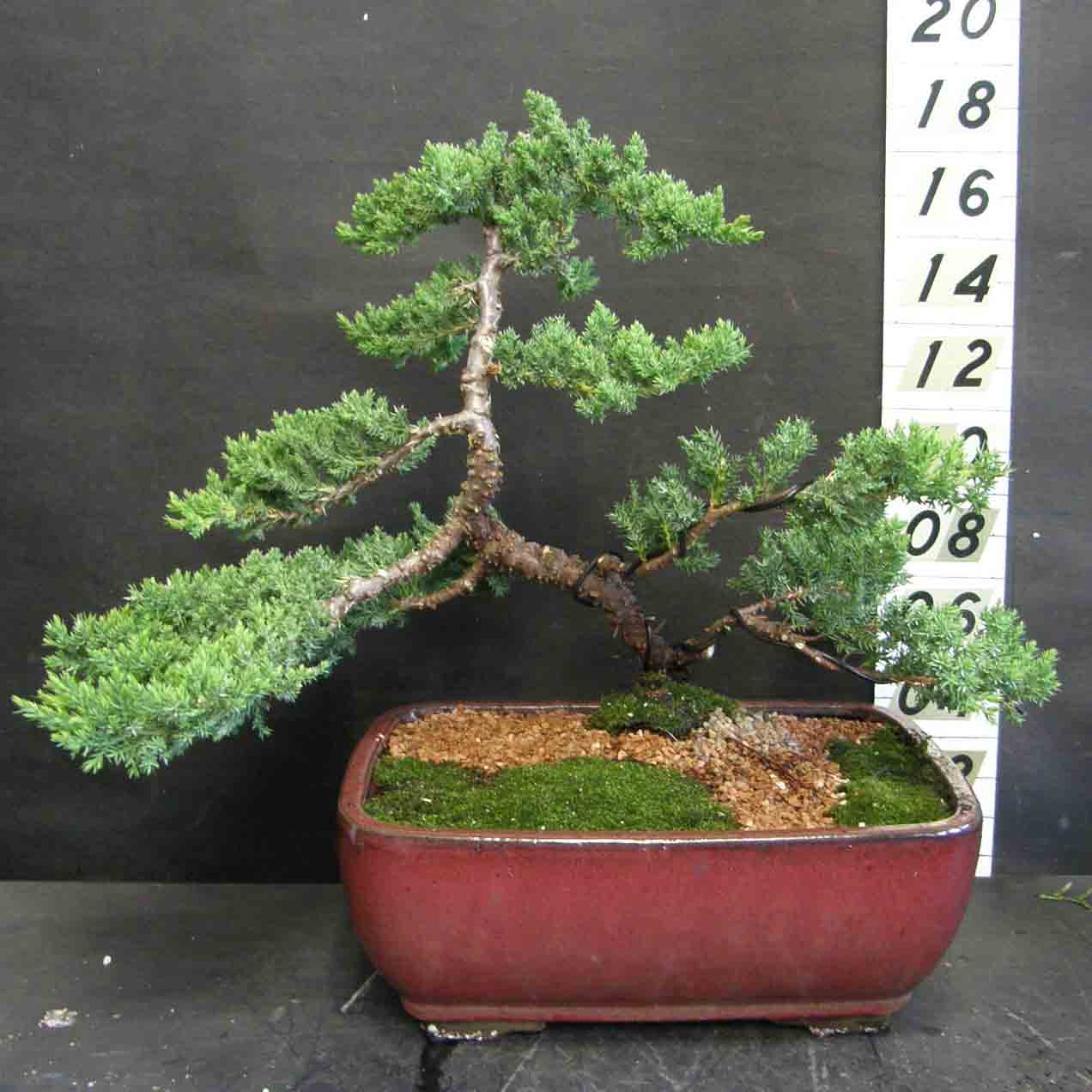

- Bonsai Trees
- Pre-Bonsai Trees
- Books
- Free Stuff
- Figurines
- Gift Certificates
- Netsuke
- Pottery
- Supplies
- Tools
- DVD's-Videos
![]()
![]()
![]()
![]()
It is there to help you judge the size of the bonsai pictured.
Some bonsai cannot tolerate a trip from the east coast to the west coast by ground shipping, which takes a full week (5 business days) to arrive. Delivery time by FedEx is guaranteed, delivery time by the U.S. Postal Service is not guaranteed. If the shipping option you selected could jeopardize the safe delivery of your order, we will contact you. You will have the option of switching to a faster (and more expensive) delivery option or canceling your order This only applies to orders using the U.S. Postal Service or FedEx Ground to 5 day delivery zones. To see the transit time to your location, go to www.FedEx.com, click "Time in Transit" and put in our zip code (11223) and yours.

Click Here Or Photo To See Our Bonsai Trees
Due to agricultural restrictions, we do not ship bonsai or nursery stock outside the U.S.A.
The following information relates to winter temperature requirements.The bonsai on the list you will see after clicking on the photo above are divided into four main groups.
Black Type for Temperate climate trees which need cold (below 45 degrees) in winter
Green Type for Temperate climate trees that can tolerate below freezing temperatures, but will survive in a winter environment that does not go much below 25 degrees, but not much above 50 degrees.
Red Type for Sub-tropical climate trees which cannot tolerate cold (60 degrees to room temp.) in winter, and need direct sun.
Blue Type for Sub-tropical climate trees which cannot tolerate cold (60 degrees to room temp.) in winter, and do not need direct sun.
Subtropical bonsai should never go below freezing, and in many cases the 40's is too cold. Temperate bonsai must be kept cold in winter. Some species can survive winter temperatures that get no lower than the 50's, but they can tolerate temperatures which go below freezing ( green type).
There is a huge difference in temperature range in the U.S. so there's no way to give you advice without knowing where you live. The listings on the following page shows the lowest and highest each bonsai can tolerate in winter. Going above or below these limits can be harmful to your bonsai, so if you need help deciding what species will do best in your part of the country, let me know what the normal winter low is in your area, and if you plan to keep your bonsai outdoors or indoors. Keep in mind that the above relates to winter care. From spring to fall, all bonsai can take temperatures in the 80's and 90's as long as they are watered properly.
You can send an e-mail to Paul@bonsaiofbrooklyn.com or call us at 917-325-3954 during the day with questions about the above or any other bonsai questions you may have.
With any bonsai you purchase, we include an instruction sheet printed specifically for that bonsai. Please read it and follow it as closely as possible.
Unlike other bonsai web-sites you may have visited, we will send you the exact bonsai in the photo. In the event that more than one person orders the same bonsai before the index can be adjusted, the first to order will receive the bonsai in the photo. I will contact the other person and offer either a substitute, or a refund.
PLEASE NOTE: All bonsai come in the bonsai container
in the photo.
We use ONLY genuine imported Japanese and Chinese stoneware bonsai pottery.
"I think that I shall never see a poem lovely as a tree....."
I wonder what Joyce Kilmer, the author of "Trees" would have thought had he been exposed to bonsai. To this day, over 45 years after my hobby (addiction? obsession?) began, I am more fascinated by these little miracles with each passing day.
I set a policy in the sixties, when I started to pot bonsai for resale at flea markets. A bonsai MUST be acclimated for 90 days before being offered for sale. The reason is simple. When a tree is put through the trauma of root pruning, repotting and trimming, It needs good conditions and intensive care for 6 to 8 weeks. Potted bonsai are often purchased as gifts for beginners or by people new to the hobby. A freshly potted bonsai, still in shock, could easily die with care and conditions that would be fine for a more established bonsai. When a beginner's first bonsai dies, often there is not a second one. This is not just a loss to people who sell bonsai, it's a loss to those who will never know the joys of this hobby. Before you make a purchase, try to find out what procedures the seller uses to assure your bonsai is strong & healthy at the time of sale.
PLEASE, avoid hardware chains, lumber yards, super markets, department stores etc. They tend to offer mass produced, unacclimated bonsai in cheap plastic pots with gravel glued to the surface. They often get little or no sunlight, and tend to not be watered properly. Your chance for success with these bonsai are slim at best. As with most things in life, you get what you pay for.

Click To E-Mail